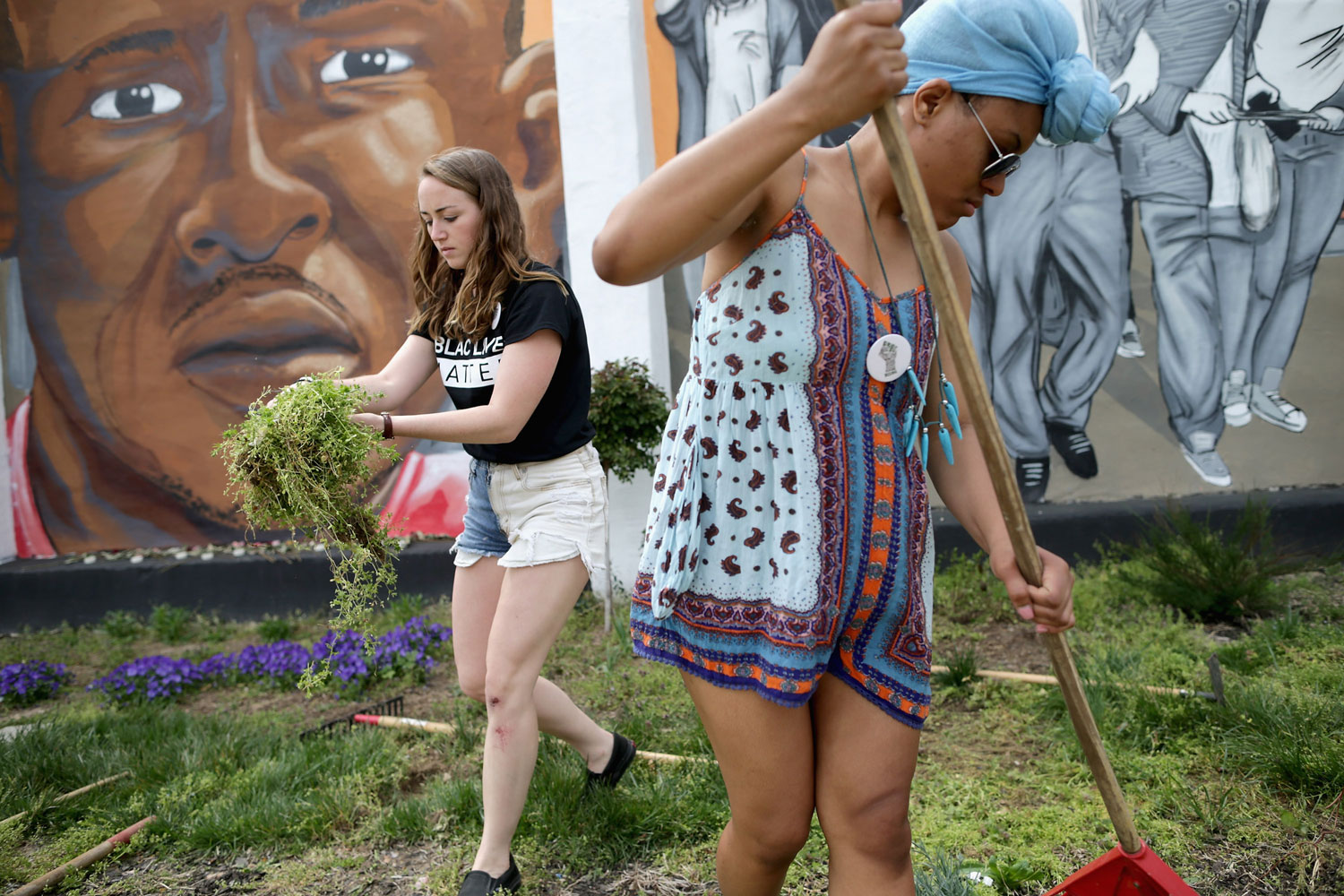Humanity pulses like blood through a vein along West Baltimore’s Pennsylvania Avenue, a whirl of people moving beneath a cloud-dappled winter evening sky illuminated with blazes of crimson fire from the setting sun.
At the Avenue Bakery, Jim Hamlin is dishing out dinner rolls, Jewish apple cake and morsels of the history of the storied Baltimore neighborhood of Sandtown-Winchester, whose trajectory mirrors that of many just like it around the United States.
“I was fortunate that I grew up on the cusp of segregation and integration,” says Hamlin, a 72-year-old who grew up in Sandtown and opened the bakery after working for UPS for 35 years. “Pennsylvania Avenue was the business district for this community. The Royal Theatre was still open and there was nothing but nightclubs, restaurants, barber shops, all the staples we needed in our community. Some were owned by African-Americans, some were owned by Jewish folks. It was the thriving entertainment center for Baltimore from the 1930s to the 1960s.”
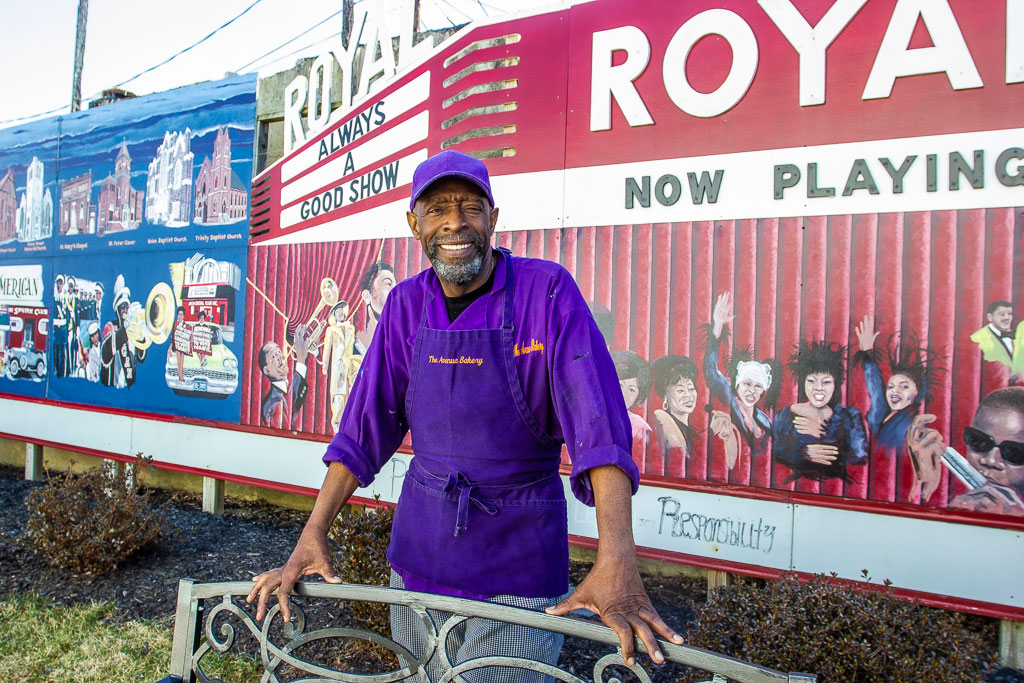
Recent decades, however, have been less kind to Sandtown. The neighborhood erupted into the national consciousness following the April 2015 murder of Freddie Gray by officers of the Baltimore Police Department and subsequent protests that spiraled into riots that rocked the city. (Though Gray’s death was ruled a homicide by a medical examiner, attempts to prosecute the six officers involved ended in acquittal and dropping of the charges against them.)
But the story of Sandtown’s struggle long predates that early Sunday morning when the 25-year-old Gray’s path crossed with the police outside The Gilmor Homes, a now largely demolished public housing facility named after a wealthy merchant family that included a Confederate cavalry officer. Those struggles say much about the attitude of successive city, state and federal governments toward some of the most disadvantaged and marginalized people in the United States and the herculean efforts of those in the community to rescue it from the jaws of despair.
Settled by Europeans on what was largely a traditional Native American hunting ground in the second half of the 1600s, Baltimore soon boomed thanks to extensive trade with Britain’s sugar-producing Caribbean colonies in products such as grain and tobacco, the commerce facilitated by the extensive use of an economic model based on slavery. Decades after the U.S. won its independence from Great Britain, in September 1814, during the Battle of Baltimore fought during the War of 1812, a local lawyer, Francis Scott Key, penned the words to what would later become “The Star-Spangled Banner,” the national anthem of the United States. Among its lyrics is one line, from the third verse and thus not performed often today, that gives a hint of the flavor of society there: “No refuge could save the hireling and slave/From the terror of flight, or the gloom of the grave.”
Despite its northern location, Baltimore was a city that, culturally and politically, in many ways remained part of the slave-owning Deep South. Though it also boasted shipbuilding yards, sawmills and other factories, an undercurrent of violence and chaos rumbled beneath the hum of industry. In 1835, the Baltimore bank riot saw a three-day spree of pillage and looting after the collapse of the Bank of Maryland resulted in the overnight evaporation of millions of dollars in depositors’ savings. In October 1849, the author Edgar Allan Poe was plucked “in distress” from its streets wearing clothes that were not his own and died a few days later. In April 1861, at the very beginning of the Civil War, Confederate secessionist sympathizers attacked members of Massachusetts and Pennsylvania state militia regiments en route to Washington, sparking a clash that left four soldiers and 12 rioters dead. As the war progressed, Abraham Lincoln found it expedient to clap George William Brown, the city’s secessionist mayor, in jail for more than a year. After the war, the city again saw riots in 1877 when the Baltimore & Ohio Railroad cut the wages and reduced the hours of its workers, leading to a clash between civilians and the National Guard, federal troops and local police in a melee that left at least 10 dead.
But the postwar period and into the first half of the 20th century also saw a flourishing of Baltimore’s African-American community in general and in Sandtown in particular. Factories like the Mount Vernon Mill, a cotton textile mill in nearby Jones Falls, provided plentiful employment and Pennsylvania Avenue itself became a glittering mecca for Black culture, with the nearby Royal Theatre (built in 1922) and the Penn Hotel serving as anchors for the area’s artistic milieu. Thurgood Marshall, who as an attorney successfully argued Brown v. Board of Education before the Supreme Court (which ruled that state laws establishing racial segregation in public schools were unconstitutional) and later became the court’s first African-American justice, lived in Sandtown. So did jazz musicians like Billie Holiday, Cab Calloway (whose songs such as “Minnie the Moocher ” and “Reefer Man” in some ways encapsulated the district’s libertine appeal) and Chick Webb. For a touch of the bucolic, the horse-drawn carts of the arabbers, or street vendors, plied the lanes of the neighborhood carrying vegetables, fruits, blocks of ice and other necessities. The economic development of the city was frequently spoken of in terms of a “black butterfly,” with its majority African-American population spreading like a butterfly’s wings on either side of a highly moneyed white corridor of real estate running through Baltimore’s center.
“The community then, when it came to economic opportunity, there were many options for young people,” says Jim Hamlin, whose bakery features photographs of Sandtown’s notables and a mural celebrating some of its famous figures. On the first Saturday of each month from May to September, the bakery hosts concerts in its small courtyard.
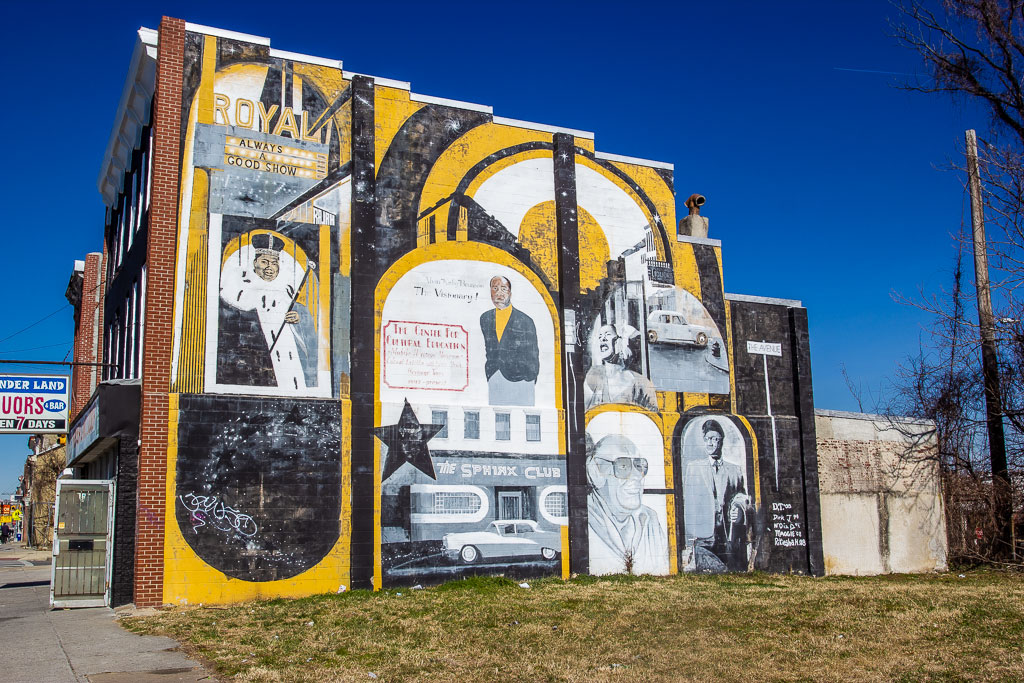
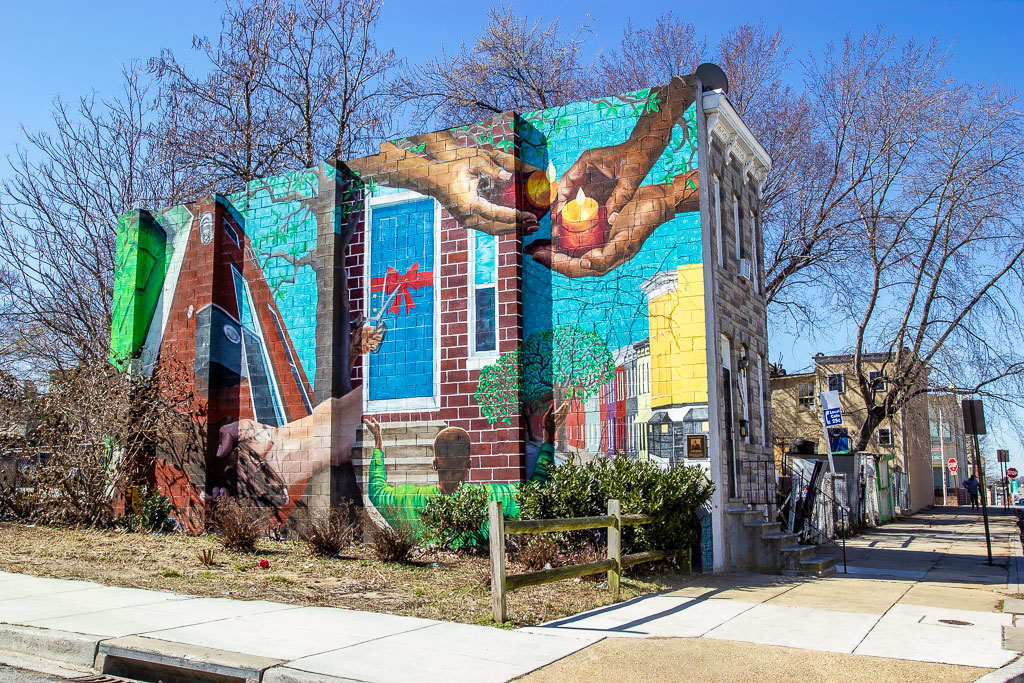
When the civil rights leader Martin Luther King Jr. was slain on the evening of April 4, 1968, the shots that killed him may have been fired in Memphis, Tennessee, but they were heard in many other U.S. cities, including Baltimore. The city was marked by a week of rioting after the assassination, unrest that hit Sandtown particularly hard (Maryland Gov. Spiro Agnew — later Richard Nixon’s vice president — responded by sending the National Guard to the city and then publicly lambasting local Black leaders for their supposed “failure” in the face of the unrest). The Pennsylvania Avenue business district was devastated, with many businesses opting not to reopen, and by 1971 the Royal Theatre had been demolished, a sadly symbolic act for a community rocked back on its heels. Eventually, hundreds of homes would be abandoned and fall into various states of disrepair.
Baltimore was not spared from the violence associated with the crack epidemic of the late 1980s and early 1990s, nor, along with it, the glaring inequality of law enforcement and sentencing that targeted poor, urban (frequently African-American and Latino) communities. The Anti-Drug Abuse Act of 1986 led to the notorious “100 to 1” ratio in sentencing, which meant individuals faced far longer sentences for offenses involving crack cocaine than for offenses involving a similar amount of powder cocaine, and leading to African-Americans often serving an equal amount of time in prison for nonviolent drug offenses as arrested whites did for violent offenses. This disparity was not corrected until President Barack Obama signed the Fair Sentencing Act into law in August 2010.
A level of intergenerational poverty began to afflict neighborhoods like Sandtown. According to the 2017 Baltimore City Neighborhood Health Profile, the median household income in the neighborhood is $24,374, a little more than half of what it is in the city as a whole, while the poverty rate is 50.3%, as compared with a citywide rate of is 28.8%. Progress often seems tenuous. According to a 2015 study by Loyola University’s Peter Rosenblatt and Johns Hopkins University’s Stefanie DeLuca, after an uptick in home ownership at the beginning of the millennium, the 2008 housing crisis led to 350 foreclosures in the neighborhood in just a two-year period.
“There are people who cannot take care of their families or ever get out of their current situations, so they participate in the street economy, and those rules are totally different than the roles we play by, if you make a mistake, it could be your life,” says Ashiah Parker of the No Boundaries Coalition, a resident-led advocacy organization based in Sandtown. “There are people in this city who are fourth or fifth generation impoverished, who have never had a member of their family go to college or live outside of the housing projects.”
Nor has law enforcement been blameless in this dynamic. A 2016 probe by the U.S. Department of Justice found that the Baltimore Police Department had engaged “in a pattern or practice of conduct that violates the Constitution or federal law” including “making unconstitutional stops, searches, and arrests; using enforcement strategies that produce severe and unjustified disparities in the rates of stops, searches and arrests of African Americans; using excessive force; and retaliating against people engaging in constitutionally protected expression.” The report found that the practices were “driven by systemic deficiencies in [the department’s] policies, training, supervision, and accountability structures that fail to equip officers with the tools they need to police effectively and within the bounds of the federal law.”
Many in the city believe these practices solidified during the 1999 to 2007 mayoralty of Martin O’Malley, who went on to become governor of Maryland and ran an unsuccessful bid for the Democratic nomination for president in 2016. Though homicides fell during O’Malley’s tenure as mayor (and arrests increased dramatically), the systemic, structural causes behind crime remained stubbornly resistant to correction. In 2010, the city settled for $870,000 a lawsuit brought against it four years earlier by the American Civil Liberties Union (ACLU) and National Association for the Advancement of Colored People (NAACP) on behalf of 14 who said their arrests were part of a systematic policy of arrests without cause.
“In Maryland, if you are convicted of a felony, even as a 15-year-old, it can never be expunged from your record,” Ashiah Parker explains. “Walmart checks that. We’re not even talking about becoming a top tier accountant. You can’t have a criminal background and go into senior housing, for example. … We need to do something radical because we talk about second chances, but we don’t really offer them.”
Much of the violence, however, comes from within the community itself. In January 2022, Baltimore’s Child Fatality Review, which brings together various city agencies and experts, released a report on 208 child fatality cases over the previous five years, finding that homicides are the leading cause of death of children in the city, with 90% of the fatalities involving children of color (in a city in which people of color make up about two-thirds of the population). One of the victims was 13-year-old Maliyah Turner, who was shot and killed outside the Lillian Jones Recreation Center in Sandtown, where she had arrived for band practice, this past November.
“It’s painful for me to be a person who God has selected to be a servant to the people to see the suffering of those who God created in his likeness and his image to be a little lower than the angels,” says lifelong Sandtown resident Elder C.W. Harris, the founding pastor of Newborn Community of Faith Church, who, along with jazz musician Todd Marcus, established an organization called Intersection of Change to address and ameliorate poverty-related challenges. “It is inhumane. God is crying because of the way we are treating one another.”
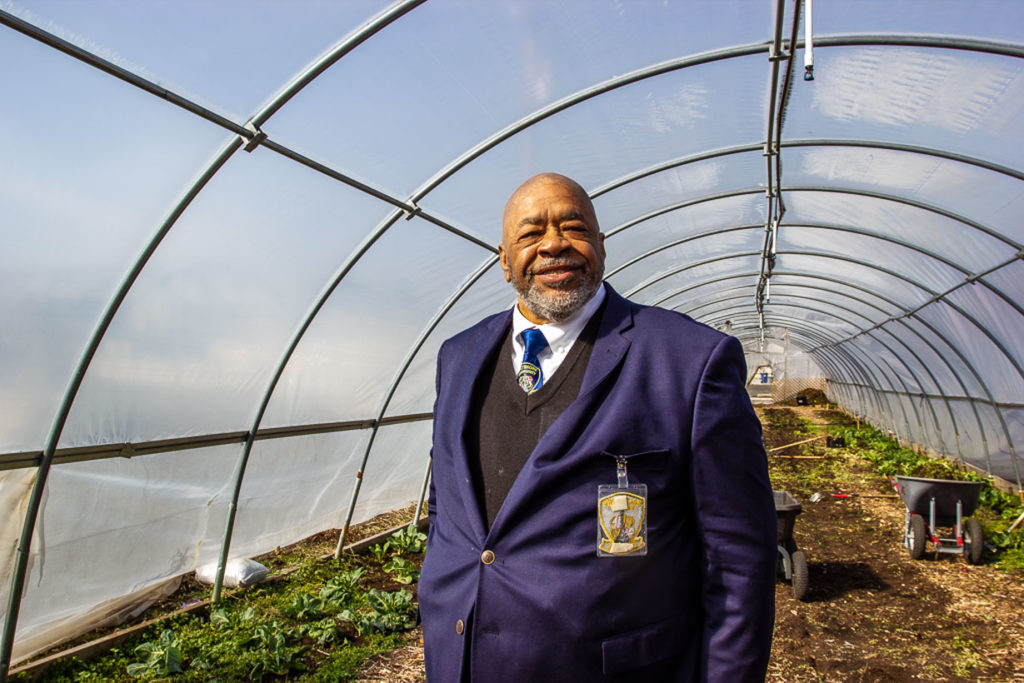
“We are reconcilers,” says Harris. “And those who have lived here have to receive the encouragement and belief that they can do it. The nation should be ashamed of the way this side of central West Baltimore is being treated. We can stop all this if we show some humanity, but we’re not showing any.”
Among those on the front lines of combating violence are men like Wayne Brewton. A 61-year-old released from prison in March 2017 after serving a 31-year sentence for murder, Brewton is what is known as a “violence interrupter” with Safe Streets Baltimore, a violence prevention program operated by Catholic Charities in collaboration with the Baltimore City Department of Health and the Mayor’s Office for Neighborhood Safety and Engagement.
“The nature of civilization doesn’t change. There’s always going to be some version of greed, jealousy and hate,” says Brewton in his spare, tidy apartment as he reaches down to pet a cat purring around his ankles. “And I was led down a path of total destruction.”
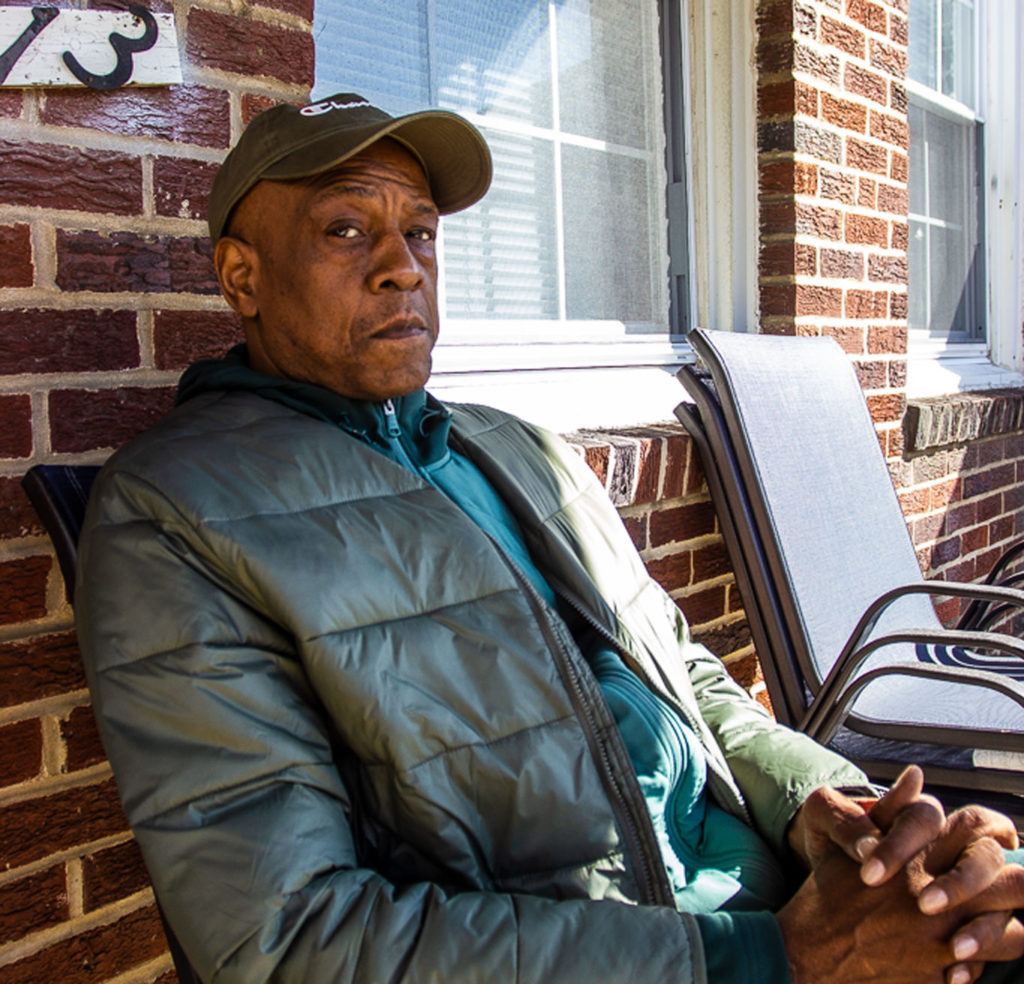
It is a fate he hopes to help today’s young people avoid, along with the lure of images of success that can confront them on a daily basis.
“Picture yourself as a child, going to school. You probably haven’t eaten in a couple of days. The teacher probably doesn’t care much about you. You have to walk past nine or 10 blocks of abandoned homes, so you admire the ones who get up and fight through that,” says Brewton. “The main important factor when you deal with the youth of today [is that] you have to listen and stop trying to make decisions for them and they are going to tell you what they need. But you have to earn their trust.”
It is not an approach that comes without risks. In January, 29-year-old DaShawn McGrier, a Safe Streets violence interrupter, was slain as part of a quadruple shooting in the McElderry Park neighborhood east of Sandtown. He was the third member of the organization to be shot and killed in the past year. Nevertheless, Brewton believes it is important to push on.
“A lot of the kids have never been out of Sandtown-Winchester,” Brewton notes. “We might take them to baseball games, to basketball games, to the Museum of African American History & Culture. … For about six hours, we’ll be saving some lives, maybe their own. We need the richness of community back. We’re the change we’re looking for. If you want change, you’ve got to take the initiative to make that change.”
Historically, Baltimore’s politicians themselves have often seemed unable or unwilling to confront the great challenges of communities like Sandtown. For more than a decade, from 1947 to 1959, Baltimore’s mayor was Thomas D’Alesandro Jr., the father of current House Speaker Nancy Pelosi. While mayor, D’Alesandro oversaw the dedication of a large statue of Stonewall Jackson and Robert E. Lee, seditous traitors who defended the infernal institution of slavery. The statue stood in Wyman Park until it was ordered taken down and put in storage by the Baltimore City Council in August 2017. Pelosi’s elder brother, Thomas D’Alesandro III, served as mayor for a single term that overlapped with the 1968 riots. Baltimore saw its first Black mayor, Clarence H. Burns, ascend to the office in 1987 when he took over from William Donald Schaefer following the latter’s resignation after being elected governor of Maryland. Buns was succeeded by the first elected Black mayor, Kurt Schmoke, who served from 1987 to 1999.
In more recent years, the city’s political class has been buffeted by a series of scandals. Sheila Dixon, who served as Baltimore’s mayor from January 2007 until February 2010, was convicted of embezzlement in connection with a scheme to purloin gift cards meant for Baltimore’s poorest residents. Catherine Pugh, who served as mayor from December 2016 until May 2019, pleaded guilty to wire fraud and tax evasion. In January, Baltimore State’s Attorney Marilyn Mosby was indicted on charges of perjury and making false statements on mortgage applications.
Baltimore’s current mayor, 37-year-old Brandon Scott, previously served as president of the city council and ran on a promise that he would lower Baltimore’s murders to fewer than 300 a year during his first year in office. But in Scott’s first year, 2021, the city experienced 337 homicides and 726 shootings. Scott has often seemed overwhelmed by the violence afflicting the city, in January 2022 telling a reporter that he was “pissed off” about the violence and that “if folks have something to say, get your ass on the streets, walk with us, do something. Don’t tweet, don’t talk.”
It is hard to spend any length of time in Sandtown, though, and not come away with the impression that many in the community are indeed doing something, although often away from the glare of the cameras and rather in the deep, daily work in the trenches of community-building.
“It’s rough, but I do think things can turn the corner,” says Ashiah Parker. “And I think people are still holding hope that a renaissance era can come back.”
Some in Sandtown’s younger generation hold out that same hope.
“I think a lot of youth aren’t fortunate enough to have the ability to see past the obstacles that other people put in front of you,” says 23-year-old Keyarra Johnson, an artist born and raised in the neighborhood and now a program manager with Jubilee Arts, a community arts program based in Sandtown. “But there are a lot of people in the neighborhood trying to reconnect the community with this rich history and encourage the artistic and entrepreneurial side of Sandtown.”
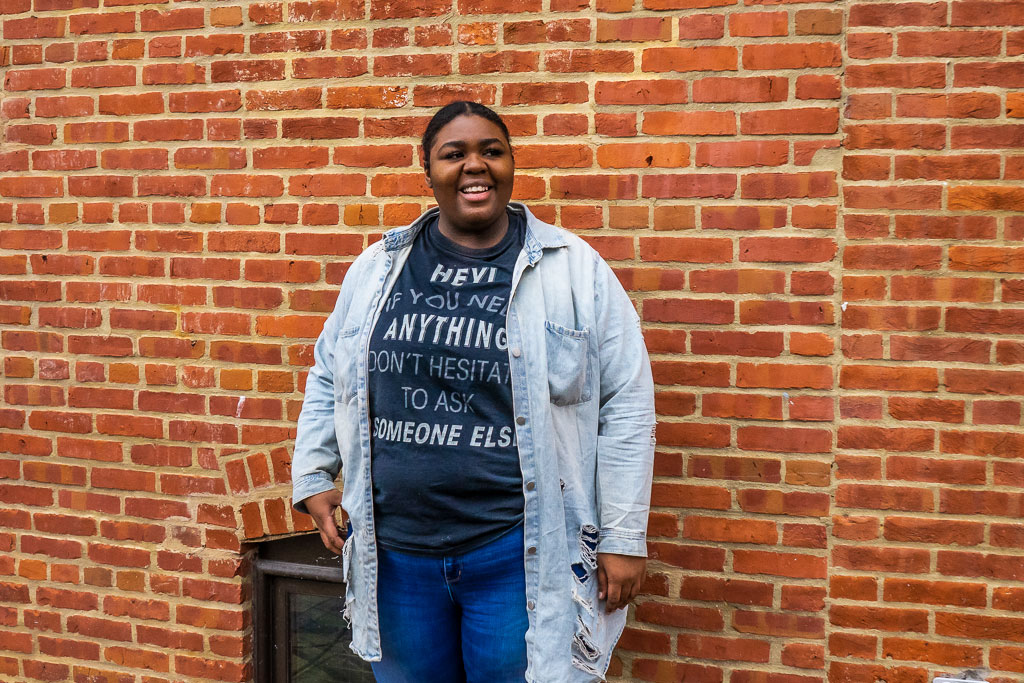
Midway between Pennsylvania Avenue and Presbury Street, where a fenced-in mural shows Freddie Gray’s face gazing soulfully out at the neighborhood he left seven years ago, Bryan Wright trudges an acre and a half of Sandtown under a slate-gray sky, where neat rows of tarpaulin-wreathed tunnels shelter an unexpected bounty.
On land that was initially reclaimed by Intersection of Change, Wright and other members of the Strength to Love farm cultivate a variety of mustards, kale, spinach, lettuce, bok choy, dandelion greens, arugula, turnips, carrots, garlic, onions, scallions and other victuals that they sell from their own stand at the front of the property to farmer’s markets and a variety of restaurants in the Baltimore and Washington, DC area.
A native of Tennessee, Wright had been traveling back and forth to Baltimore for the better part of 20 years before he moved there permanently to become the farm’s manager at the beginning of 2021. Built on land once occupied by row houses that were demolished in the 1990s, Strength to Love works both to be a place for returning citizens – formerly incarcerated people — to come to get job training and also as a workforce development program that provides 18-to-24-year-old Sandtown residents with agricultural training.
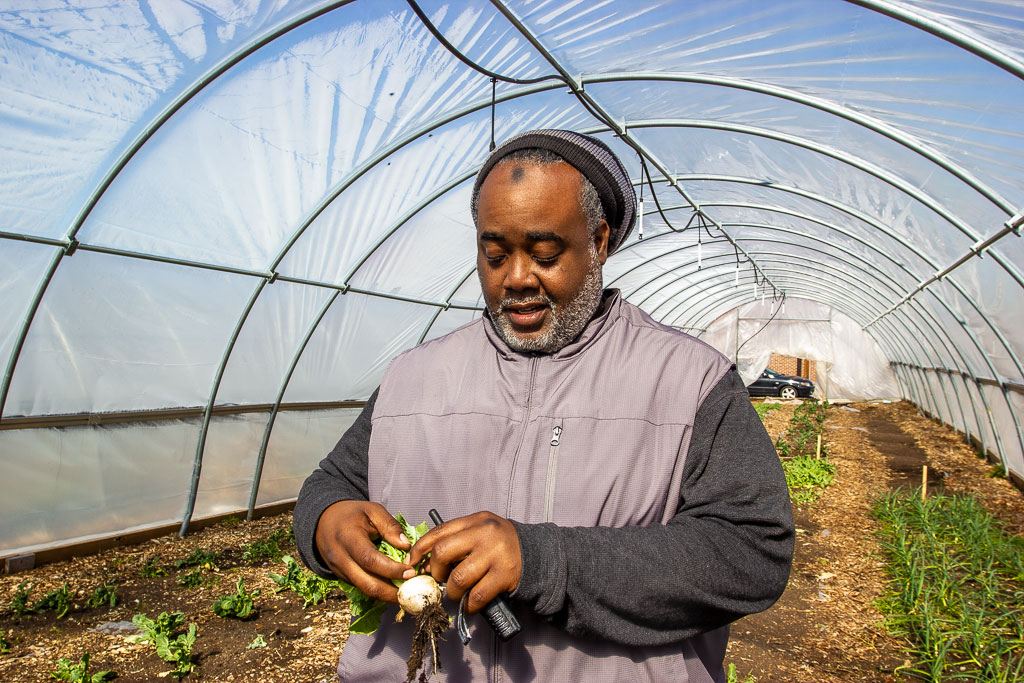
“In our community we talk about all the negatives. But food insecurity to me is a major crisis that no one is really dealing with,” Wright says as the “hoop houses,” as the miniature greenhouses are called, flutter in the chill breeze. “And it affects a community on multiple levels from an economic level to a health level to mental health to environmental justice to mental development in kids. This is really a project of empowerment for trying to create food security,”
It is not an easy task. It is not uncommon to find sex workers using the larger tunnels as places of work or to find addicts securing their fixes inside a tunnel. In the colder months, homeless people sometimes seek out the tunnels to get out of the biting wind and find a warmer spot.
“I don’t think the people sleeping in the high tunnels are being disrespectful to us,” Wright says. “They’re homeless and they’re looking for a warm place to sleep. But at the same time, there is a need for us to make our footprint in the community more profound.”
Across the street from an asphalt plant, the farm uses 100% organic compost and envisions expanding in the near future to include a meditation garden along with its current agricultural project.
“Why wouldn’t you put a farm here?” Wright asks rhetorically. “Doesn’t it make sense to put food where the people are at? A library or a farm, it’s all nourishment. Being able to be self-sustainable is a major weapon and I think there’s a true effort to keep people from being beggars and asking for handouts. Gardens and farms are healing places. There’s no coincidence the majority of creation stories begin in a garden. Growing your own food is a revolutionary act.”



